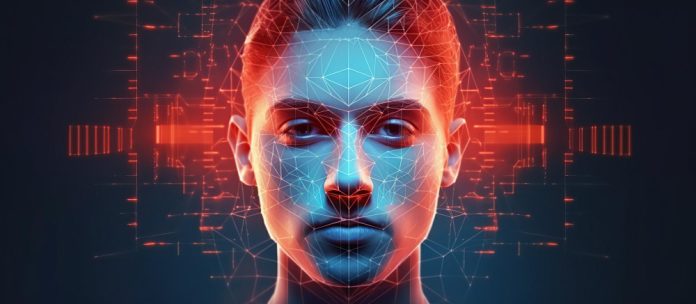In the age of rapid technological advancement, artificial intelligence has made significant strides, bringing forth both marvels and ethical challenges. One such concern that has gained prominence in recent years is the rise of Deepfakes. These are a form of synthetic media in which artificial intelligence is used to manipulate or create content, often replacing the likeness of one person with another in videos, audio recordings, or images. While this technology has incredible potential for creative applications, it also poses serious threats to privacy, misinformation, and the erosion of trust.
In a striking example of the potential repercussions of Deepfake technology, a video featuring the Prime Minister of India, Narendra Modi, went viral, sparking widespread concerns. The fabricated content not only circulated misinformation but also raised alarm about the susceptibility of influential figures. In response to the incident, Prime Minister Modi addressed the concerns surrounding the Deepfake, emphasizing the need for vigilance and technological countermeasures. This case underscores the urgency for both awareness and regulatory efforts to mitigate the adverse impacts of Deepfake technology on political discourse and public trust. For a firsthand look at the incident and the Prime Minister’s response, Readers can refer to the Video Link provided below.
PM Modi Falls Prey To Deepfake After Rashmika & Katrina, Morphed Garba Video Goes Viral| Latest News
What Is a Deepfake?
A Deepfake is a fake piece of media, usually a video, that looks real. In gaming and the media, computer-generated images have been used for years already. However, artificial intelligence technology and machine learning have now advanced to a point where it’s possible to accurately manipulate video and audio as well.
Manipulations can extend to seamlessly and convincingly replacing one individual’s face and features with another’s. Take the earlier mentioned Deepfake video of PM Narendra Modi as an example.
How Are Deepfakes Made?
Deepfakes, a product of artificial intelligence and deep learning, are created by a multi-step process that involves training algorithms on vast amounts of data. Here’s a simplified breakdown of how deep fake technology works:
- Collect Videos: Deep learning algorithms require a substantial amount of data to function effectively. In the case of Deepfakes, this data consists of numerous video clips featuring the target individual. Those creating Deepfakes must gather a sizable collection of videos and images of their chosen target, along with identifying the specific video they wish to manipulate.
- Analyze Videos: The collected videos are processed by an algorithm called an “encoder.” This encoder carefully studies the videos, learning and recognizing the target’s appearance from various angles and in diverse environments
- Map the Target onto the Video: Once the encoder comprehends the target’s features, it can seamlessly replace the face in the chosen video with that of the target. By identifying similarities between the two faces, the encoder determines the optimal way to swap them without creating an obviously fake result.
- Test the Deepfake Video: In this crucial step, a different type of AI comes into play—generative adversarial networks (GANs). The GAN algorithm evaluates the Deepfake through multiple rounds to identify any flaws. As iterations progress and flaws are addressed, it can be assumed that the Deepfake achieves a high level of seamlessness and accuracy.
This simplified explanation sheds light on the intricate process of creating Deepfakes, emphasizing the importance of understanding the technology’s capabilities and the potential risks associated with its misuse in spreading disinformation and fake news
Negative Uses of Deepfake Technology:
Fake Porn and the Unsettling World of Deepfakes:
Deepfakes began with a Reddit user named ” Deepfakes,” who posted morphed pornographic videos featuring celebrities. Shockingly, 96% of Deepfakes are linked to porn, creating a disturbing trend that raises serious ethical concerns.
Revenge Porn and Its Chilling Effects:
Deepfakes escalate to more sinister levels with revenge porn, where explicit images of individuals are created without their consent. This particularly affects women, who are victims in over 90% of cases, showcasing the distressing consequences of this technology.
Sextortion: A Real-Life Threat Amplified:
Sextortion, a form of blackmail where criminals threaten to release compromising videos, gains an alarming dimension with Deepfakes. In January 2021 alone, over 500,000 cases were identified, showcasing the potential real-life damage this form of cybercrime can inflict.
Phishing Takes a Deceptive Turn:
The technology behind Deepfakes extends beyond explicit content to phishing, where cybercriminals use fabricated personas to trick individuals into divulging valuable information or taking harmful actions.
Fake News and Propaganda: Manipulating Reality:
Deepfakes stand out as potent tools, expertly manipulating reality. These synthetic videos, evolving from the realm of “fake news,” blur the distinction between truth and falsehood. Amplifying the reach of propaganda, Deepfakes, by convincingly replicating influential figures, fuel the spread of orchestrated disinformation, exacerbating the erosion of trust in media. In the fight against misinformation, recognizing and addressing the threat posed by Deepfakes is paramount for upholding the integrity of information in our digitally disrupted world.
Actress Rashmika Mandana’s Deepfake Experience:
Actress Rashmika Mandana found herself at the centre of a troubling incident when a Deepfake video featuring her went viral. In response, Mandana spoke out about the potential dangers of this misuse of technology, stressing the importance of staying vigilant and raising awareness to tackle the threats posed by Deepfakes. This incident serves as a real-life example of the impact Deepfake technology can have on individuals, underlining the urgency of addressing and combatting these threats.
Deepfake: Tips to identify and safeguard yourself from this AI-powered hoax
Positive Uses of Deepfake Technology:
Education Elevated: Bringing History to Life
Deepfakes have a brighter side, particularly in education. Imagine learning about historical events with narration from the figures themselves. This application is expected to make learning more engaging and innovative, enriching the educational experience.
Film and Media Magic
In the realm of film and media, Deepfakes democratize CGI and VFX, making these techniques accessible to a broader audience. Influencers and media personalities can use Deepfakes to create captivating content, as seen in the recreation of a young Luke Skywalker in “The Book of Boba Fett.”
Content Personalization: Tailoring Experiences for Individuals
Deepfakes allow for customized and personalized content by manipulating video and voice. David Beckham’s campaign with Malaria No More showcases the potential for believable translations, with Deepfakes syncing lips to audio and adding translations in the celebrity’s voice.
How to Protect Yourself Against Deepfakes
Facing the potential threat of Deepfake videos may seem daunting, but there are practical steps you can take to safeguard yourself in the digital realm. Here’s a user-friendly guide to help you navigate the landscape and minimize the risk of becoming a target:
Picture-Perfect Privacy:
Limit Your Sharing: While sharing pictures is a part of our online lives, consider being mindful of the quantity. Avoid flooding the internet with numerous photos of yourself, as a vast collection makes it easier for cybercriminals to craft realistic Deepfakes.
Social Media Shield:
Go Private: Most social media platforms offer privacy settings. Activate them! Keeping your profiles private restricts access to your photos. You can also control who tags you and interacts with you online, adding an extra layer of protection against potential Deepfake threats.
Surf Safely with a VPN:
Anonymous Browsing: Secure your online presence by using a Virtual Private Network (VPN). While it won’t directly shield your photos, it keeps your browsing activity private. This helps safeguard against hackers who might exploit your online behaviour to target you for Deepfake creation.
Antivirus Armor for Your Devices:
Malware Defense: Ensure your devices are fortified against malware with a reliable antivirus scanner. Malicious software can compromise your personal media, paving the way for Deepfake mischief. A secure device is a robust defence against potential cyber threats.
Swift Action with Authorities:
Report and Remove: In the unfortunate event that a Deepfake featuring you surfaces online, act promptly. Report the content to the social platform where it was shared. Most platforms have strict community guidelines against Deepfakes, and they will take swift action to remove the content.
Remember, while the creation of Deepfakes may require a significant investment, adopting these simple measures can bolster your defences and discourage potential cyber threats. By staying informed and proactive, you play a crucial role in ensuring your online safety in the age of rapidly evolving technology.
Deepfake tech is super powerful and can do awesome things, but it’s a double-edged sword. On one hand, it opens up exciting possibilities across various industries. On the other hand, if misused, it can wreck privacy, mess with security, and destroy trust in information. Striking a balance between pushing the boundaries of innovation and ensuring responsible use is crucial.
As technology keeps advancing, dealing with the ethical concerns tied to Deepfakes requires a team effort. Tech wizards, policymakers, and regular folks all need to join forces. Together, we can make sure that synthetic media becomes a force for good, not a source of chaos. Let’s build a future where we harness the power of Deepfakes for positive purposes without compromising our privacy, security, or the truth.



























